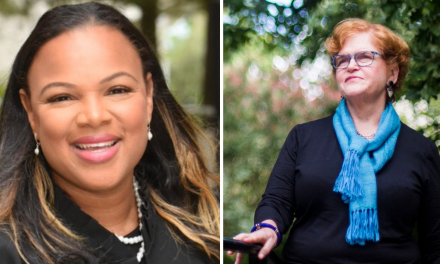Students facing sudden adversity will find that a fund supporting them will have more money than ever before.
Emory’s Student Hardship Fund received a donation of more than $200,000, which will generate $10,000 annually in interest, according to the program’s founders.
This endowment, the Hardship Fund’s largest donation to date, will allow the program to continue distributing grants to students suffering from unexpected catastrophes threatening their ability to stay in school, according to an Oct. 31 University press release.
The donor, Walter H. Beckham III (’77L), did not wish to comment on the endowment in an effort to emphasize the Hardship Fund rather than the donation itself, according to Associate Director of the Office of University Media Relations Elaine Justice.
The Beckham Family Fund, established in the late 1970s as a loan fund for Emory students in need, now supports the Student Hardship Fund, which was founded in 2012 by students Jordan Stein (’12C) and Stephen Ratner (’12C).
The Beckham family’s legacy at Emory dates back to the end of the Civil War, according to the press release. Thirteen members spanning more than five generations have earned Emory degrees.
After engaging in some research with a sociology professor, Stein and Ratner both noticed a widespread financial need on campus.
“There was nothing to support a student who has had some unexpected catastrophe in their lives,” said Stein, a sociology and political science major. “Even if you’re on full scholarship, you’re still one disaster away from having to leave school.”
Ratner said he found that there were no “no strings attached” grants; there were only loans.
“Our hope is that down the line, when the students we’ve helped out are in a better place, they might come back to contribute,” he said.
During the program’s early stages, Stein and Ratner worked closely with the Office of Development to create a brochure describing their mission, guidelines and the stories of two students given Hardship Fund grants.
“The key was to prove that the program was viable and that it works,” Stein said. “It was a tough pitch to make – why donate to one student organization over another?”
However, the brochure was “well-produced,” Stein said. “It was courageous of the students to allow their stories to be published, to show where the money was going.”
While the Student Government Association (SGA), University President James W. Wagner and former University Provost Earl Lewis fundraised a total of $20,000 for the Hardship Fund during the course of the 2011-12 school year, the program requires about $5,000 per semester to continue helping students and attracting donors, according to Ratner.
“This [recent] donation is perfect, as it’ll allow us to operate as we’ve been operating,” Ratner said. “That money means we are now able to target more students who need the money, market the program, close the income gap on campus and make sure students know the fund is a resource. We want to be sure the right students are targeted.”
The Student Hardship Fund gives grants exclusively to students who have encountered an event potentially forcing them to leave school, such as a deceased or severely ill loved one or uninsured flood or fire damage to the student’s home.
Of 53 applicants as of spring 2012, 36 were awarded financial assistance, according to a document titled “Student Hardship Fund Award Statistics” provided by Ratner. The grant, which is $500 maximum and $407 on average, cannot be used solely for textbooks. Students can apply once per school year, and may remain anonymous.
“We try to be consistent,” Stein said, regarding the guidelines. “There’s no ‘most common case’ – no two situations are the same. That’s the reason this program is so essential to a college campus – no two situations are identical.”
Peer health partner and Alpha Phi Omega service fraternity member Jarquisha Hollings, for example, had a nearly empty meal plan and was not sure if she could afford standard living expenses through the winter when her mother and stepfather lost their home and jobs.
“The effect of what the fund stood for and what it could provide for students didn’t really hit me until I realized how much it could help me,” Hollings wrote in an email to the Wheel. “Receiving a grant from the Hardship Fund meant that I had a chance to receive the help that I needed with providing for myself when my family could not.”
She also added that she is currently “in a great place in life in many ways” and that Ratner and Stein were “some of the most compassionate people” she has met at Emory.
Ratner and Stein both voiced their gratitude to the donors for helping sustain their program in the long-term.
“I speak for everyone associated with the fund in expressing our profound, great thanks,” Stein said. “This proves just how much a program like this is key to our community.”
As for future donors, Stein and Ratner say they are turning their attention to alumni, current students and private organizations.
“We think students should contribute to the fund,” Ratner said. “The more student involvement we have, the more we can target students [in need of grants].”
– By Lydia O’Neal
The Emory Wheel was founded in 1919 and is currently the only independent, student-run newspaper of Emory University. The Wheel publishes weekly on Wednesdays during the academic year, except during University holidays and scheduled publication intermissions.
The Wheel is financially and editorially independent from the University. All of its content is generated by the Wheel’s more than 100 student staff members and contributing writers, and its printing costs are covered by profits from self-generated advertising sales.





Hi, i have reading out and i will definitely bookmarrk your site, just wanted to say i liked this article.
congratulations for the beautiful text
como reconquistar http://www.outrachance.com.br/
It’s best to take component in a contest for among the most desirable blogs on the web. I will recommend this site!
jordans for women http://www.flixya.com/blog/5632440/Economical-Jordans-can-they-really-usually-be-genuine-Jordans
When I originally commented I clicked the -Notify me when new comments are added- checkbox and now each and every time a comment is added I get 4 emails with the exact same comment. Is there any way you can actually take away me from that service? Thanks!
jordan 11 greys http://airjordansisq.26103.n7.nabble.com/A-Supportive-Cushion-Made-Upon-Air-Jordan-Shoes-td3.html
Aw, this was a genuinely nice post. In thought I would like to put in writing like this additionally – taking time and actual effort to create a especially beneficial article?- but what can I say?- I procrastinate alot and by no means appear to get some thing accomplished.
jordans outlet http://airjordansqqq.teenblog.com/post/205105/what_are_custom_tailored_shirts.html
This truly answered my problem, thank you!
retro jordans http://www.flixya.com/blog/5634544/Easy-methods-to-Appearance-Good-In-Skirts